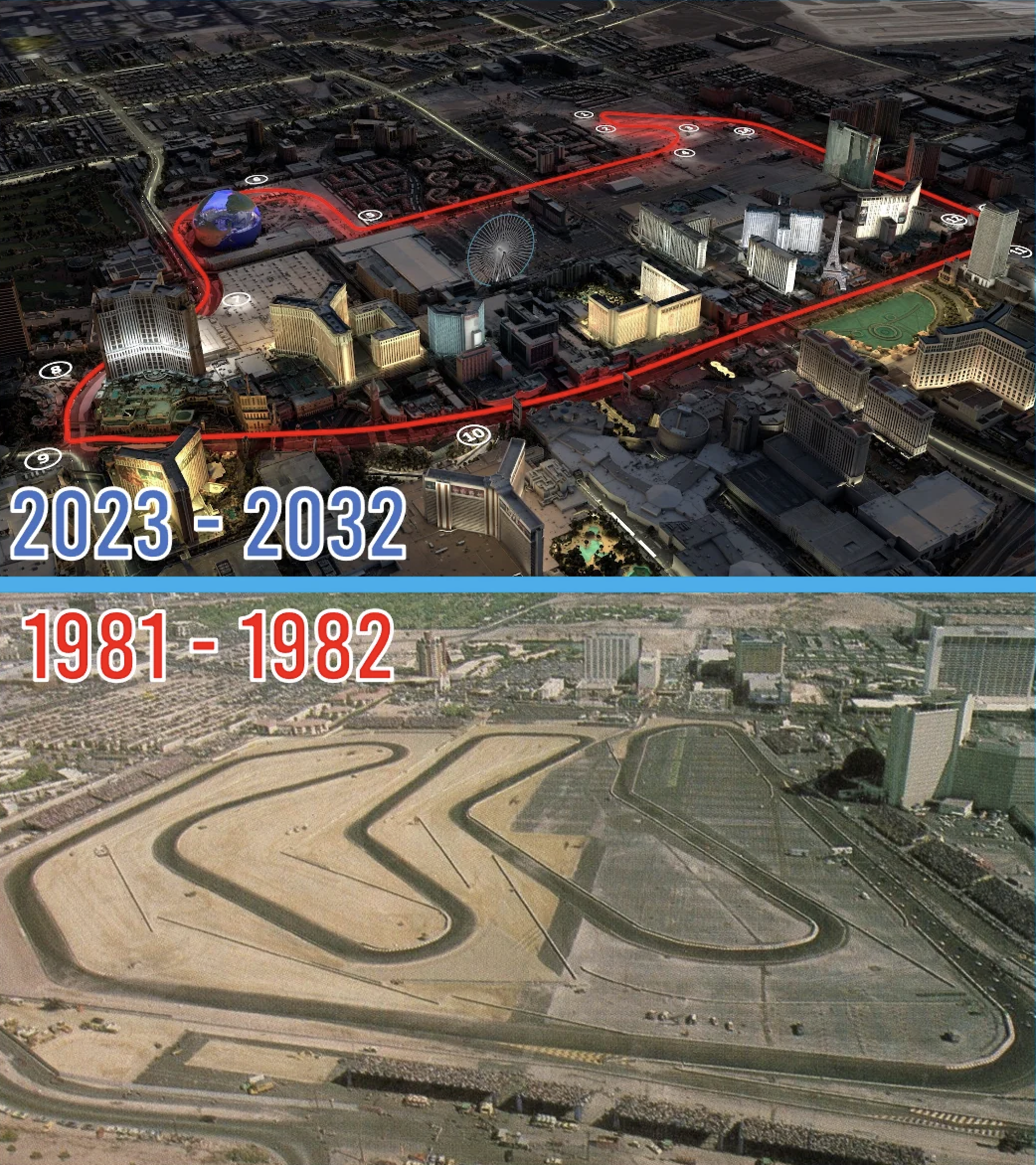F1 in the 80s: Las Vegas' First Roll of the Dice with Formula 1
The glitz, glamour, and high-octane energy of Formula 1 are back in Las Vegas, but few remember the city's first daring leap into the world of F1 racing over 40 years ago. In 1981 and 1982, Las Vegas hosted its first Grand Prix—but it wasn’t on the Strip. Instead, the world's most prestigious motorsport took to the asphalt of the Caesars Palace parking lot, creating one of the most bizarre circuits in F1 history.
How It All Began: F1's Gamble in the Desert
In the late 1970s, Formula 1 was searching for a new American venue. With Watkins Glen off the calendar, Las Vegas emerged as an unexpected candidate. The city's entertainment moguls, always looking for fresh ways to lure tourists, saw F1 as a golden opportunity to fill their hotels and casinos during the quieter months.
But the Strip itself was off-limits, so organizers got creative—and unconventional. Instead of a race down the iconic boulevard, they repurposed the parking lot of Caesars Palace into a temporary circuit. It was a move as risky as the bets inside the casino.
The "Hand" Circuit: A Design Gamble
The track at Caesars Palace was one of the most unusual in F1 history. Designed in the shape of a hand, it featured tight, twisty turns squeezed into the casino’s parking lot to meet the minimum race length requirements. Drivers found the layout both uninspiring and physically grueling. The sharp, constant turns put a heavy strain on their necks, and the bumpy, temporary surface was far from ideal for the precision and speed of F1 cars.
Yet, despite its flaws, the circuit remains a memorable oddity in F1 history. The parking-lot track stood in stark contrast to the grand European circuits, but it was also quintessentially Vegas: unconventional, bold, and undeniably outlandish.
Vegas Heat and High Stakes
Holding an F1 race in the desert came with its own set of challenges. The September heat was scorching, making conditions tough for both drivers and fans. Add to that the immense cost of building a temporary circuit, and the financial gamble started to look steep.
Caesars Palace, betting on the allure of F1 to attract international high-rollers, funded much of the event. However, while Las Vegas could always draw gamblers, it struggled to attract hardcore motorsport fans. Attendance was underwhelming, and F1 was still gaining a foothold in the U.S., so the anticipated crowds never quite materialized.
The Celebrities, The Drivers, and The Drama
Despite the logistical and financial hurdles, the Las Vegas Grand Prix wasn’t short on excitement. Hollywood stars, casino moguls, and thrill-seekers flocked to the event, eager to witness F1’s glitzy new venture.
The 1981 race saw Australian driver Alan Jones take the win, closing out the season with a victory that solidified his place in F1 lore. But the real drama came in 1982 when Keke Rosberg clinched the championship by just five points, even though Michele Alboreto won the race. It was one of the tightest title fights in F1 history.
A Gamble That Didn’t Pay Off
Despite the star power and thrilling racing, the Caesars Palace Grand Prix was short-lived. The costs were sky-high, and the event failed to deliver the financial return Caesars Palace had hoped for. The heat, the bumpy parking-lot circuit, and the lackluster attendance meant the event was more of a flop than a jackpot.
By 1982, it was clear that Las Vegas’ first F1 gamble hadn’t paid off. The race was dropped from the calendar, and the parking-lot circuit faded into obscurity.
A Legacy in Neon Lights
While the Caesars Palace Grand Prix didn’t last, its legacy lingers. It stands as a testament to the ambitious—and often wild—experiments F1 has undertaken in its quest to expand globally. Hosting a race in a parking lot may seem outlandish today, but it was quintessential Las Vegas: a high-stakes gamble that didn’t quite pan out.
Fast forward to today, and F1 is back in Las Vegas—this time with a world-class circuit that runs down the famous Strip. As Formula 1 revs its engines in the heart of the city, it’s worth remembering that its first foray into Sin City wasn’t quite the success story we see today.
Closing Thought: F1’s Love Affair with a Gamble
The Las Vegas Grand Prix of the 1980s may have been a short-lived experiment, but it played a key role in F1’s ever-evolving relationship with the U.S. As we gear up for the modern Las Vegas Grand Prix, we can’t help but smile at the city’s first daring dance with F1—a gamble that didn’t win big, but left an unforgettable mark in racing history.
4o
